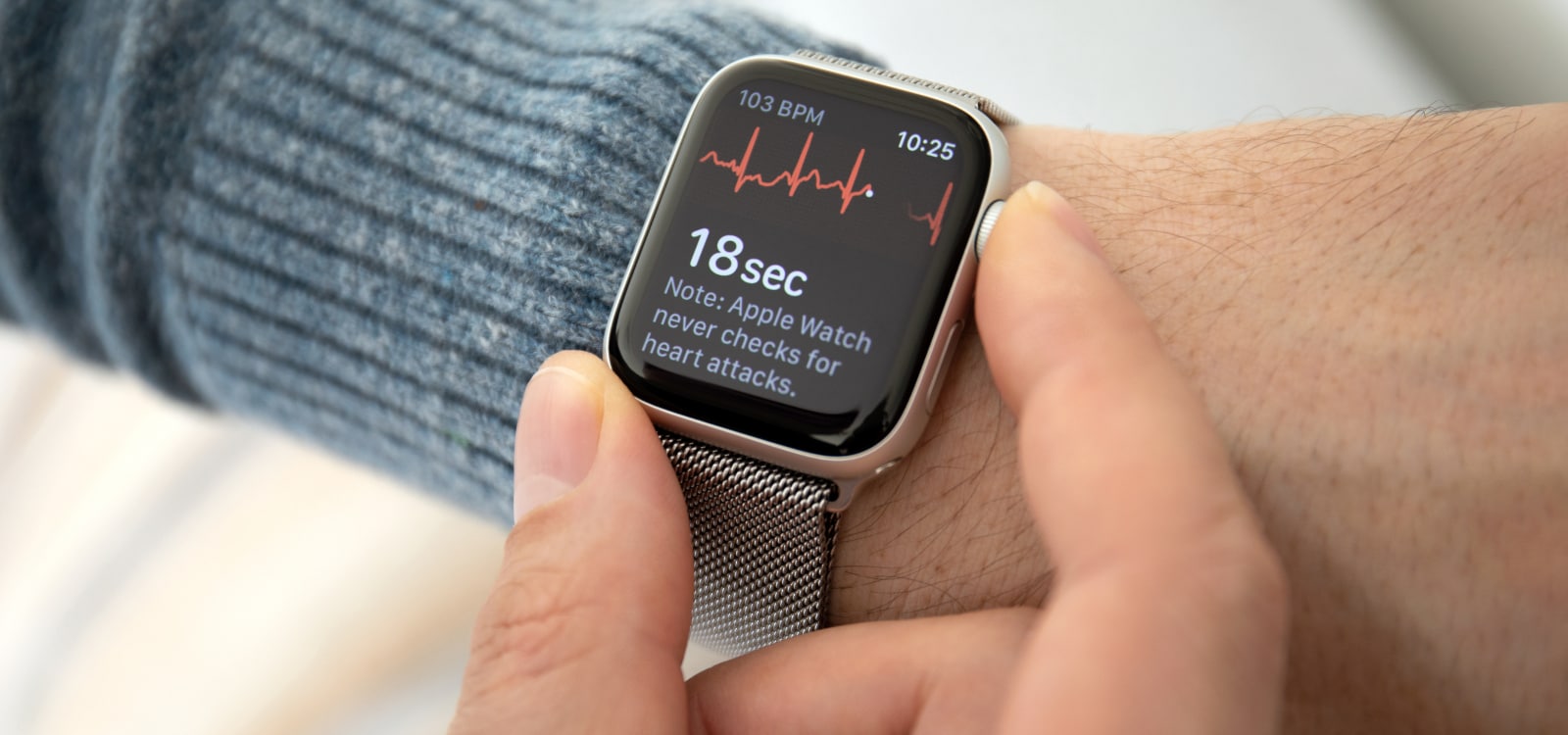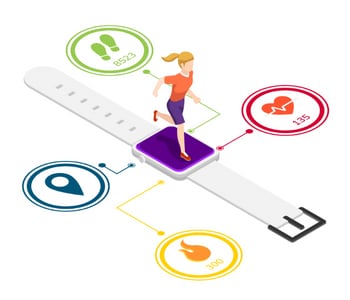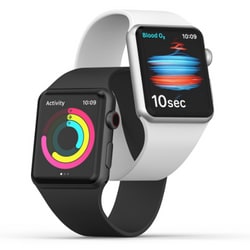Popular Wearables Support Cardiac Health
Digital devices can collect reliable data physicians use to evaluate abnormal heart rhythms.

Written by Lisa Buffington
During the past five years, wearable devices such as the Fitbit, Kardia, Garmin smartwatches, WHOOP, Apple Watch and others have changed the way people monitor their health, fitness and well-being. While these devices can count the number of steps you walk, track your location using GPS or monitor your sleep, Torrance Memorial Lundquist Luire Cardiovascular Institute cardiologists say they can also provide reliable data that can diagnose and monitor abnormal heart rhythms.
“Wearables are everywhere now, and although the data was sketchy years ago when they first came out, it is now fairly reliable,” says Erol Kosar, MD, a cardiac electrophysiologist at Torrance Memorial who treats patients with atrial fibrillation and other abnormal heart rhythms.
Everyday Technology with Life-Saving Benefits
 Abnormal heart rhythms increase the risk of stroke and cardiac arrest, so it’s critical to get an accurate diagnosis and start treatment as soon as possible. But arrythmias can be challenging to diagnose if symptoms come and go. And some patients don’t experience symptoms at all.
Abnormal heart rhythms increase the risk of stroke and cardiac arrest, so it’s critical to get an accurate diagnosis and start treatment as soon as possible. But arrythmias can be challenging to diagnose if symptoms come and go. And some patients don’t experience symptoms at all.
Some medical-grade wearable monitoring devices—including implantable loop recorders, pacemakers and implantable cardioverter-defibrillators—are suitable for long-term heart rhythm monitoring. However, these devices need to be implanted during an invasive procedure performed after the patient is diagnosed or experiences noticeable symptoms.
“Sometimes arrythmias can be ‘silent,’ meaning they don’t cause symptoms a patient can feel,” says Dr. Kosar. “In that case, there is really no way to detect the condition without using a wearable device on a daily basis.”
Consumer wearable devices are stylish, compact and affordable, making them accessible and convenient for everyday use. Patients can wear these devices nearly constantly, making the device more likely to detect heart rhythm problems—even when the patient isn’t at the doctor’s office or using another external monitoring device, such as a Holter or event monitor.
“For patients who have abnormal heart rhythm symptoms once a year that go away on the way to the emergency room, these devices can be very helpful in determining the cause,” says Matthew Ostrom, MD, Torrance Memorial Lundquist Lurie Cardiovascular Institute cardiac electrophysiologist. “Even if they wear an external Holter or event monitor for a few weeks, we might not be able to detect these symptoms because they occur so infrequently.”
Reliable Data Available for Expert Review
Hundreds of wearable wellness devices with a range of capabilities are on the market. For example, the FDA-cleared Kardia device allows patients to initiate an EKG recording when they feel symptoms. Other devices, such as the Apple Watch, are equipped with notifications that alert patients when their heart rhythm goes above or below a set number of beats per minute.
With most wearable devices, patients can print or download reports of heart rhythm activity to share with their physician. “Patients show me these reports daily,” says Dr. Ostrom. “Although follow-up testing may be necessary, these devices help us make diagnoses that illude medical monitoring capabilities so we can initiate life-saving treatment.”
Whether you are looking for a way to monitor your health or you have already been diagnosed with an arrythmia, a wearable device can provide you with peace of mind—and valuable information to share with your health care providers. “In addition to monitoring heart rhythm, wearables help people understand their overall wellness,” says Dr. Ostrom. “It’s an exciting field with benefits for patients and physicians.”
Wearable Tech Makes Diabetes Easier to Manage
Perhaps considered one of the earliest wearable devices, insulin pumps have been around for decades. Insulin pumps are electronic devices that provide life-sustaining insulin for patients with type 1 and type 2 diabetes—without the need for insulin injections.
Insulin pumps, such as the Medtronic and Tandem models, are worn outside the body and include a display screen, a place for an insulin container and thin tubing that connects the pump to the body. Omnipod is a Bluetooth-enabled, tubeless insulin pump that sticks to the skin.
 “Insulin pumps deliver a continuous supply of insulin to replace the insulin normally produced by the pancreas,” says Andrea MacMillan, program coordinator of the Diabetes Education Program at Torrance Memorial. “At mealtime, the pump does the math to help calculate and deliver accurate dosing.”
“Insulin pumps deliver a continuous supply of insulin to replace the insulin normally produced by the pancreas,” says Andrea MacMillan, program coordinator of the Diabetes Education Program at Torrance Memorial. “At mealtime, the pump does the math to help calculate and deliver accurate dosing.”
Unlike earlier models, today’s insulin pumps offer enhanced features, including the ability to communicate with a wearable continuous glucose monitor (CGM) device that provides blood sugar readings. “CGMs are devices worn on the outside of the body to provide constant, real-time feedback to help people with diabetes understand the impact of food, medication, activity and stress on blood sugar patterns,” says MacMillan. “With CGMs, people need far fewer finger pricks to track blood sugar. They also receive alerts when blood sugars go above or below a set range.”
Insulin pumps can use the CGM readings to adjust insulin automatically, which can help reduce the frequency of severe hypoglycemia—or low blood sugar—events and help people spend more time in their target blood glucose range. Even if a person doesn’t wear an insulin pump, they can still use a CGM, such as the FreeStyle Libre and Dexcom devices, with FreeStyle Libre being popular among people with type 2 diabetes.
“Physicians prescribe insulin pumps and CGMs, and diabetes educators help people learn how to use the devices and fit them into their everyday lives,” says MacMillan. “Wearable devices can reduce the burden of managing diabetes and offer peace of mind—a game changer for people living with diabetes.”